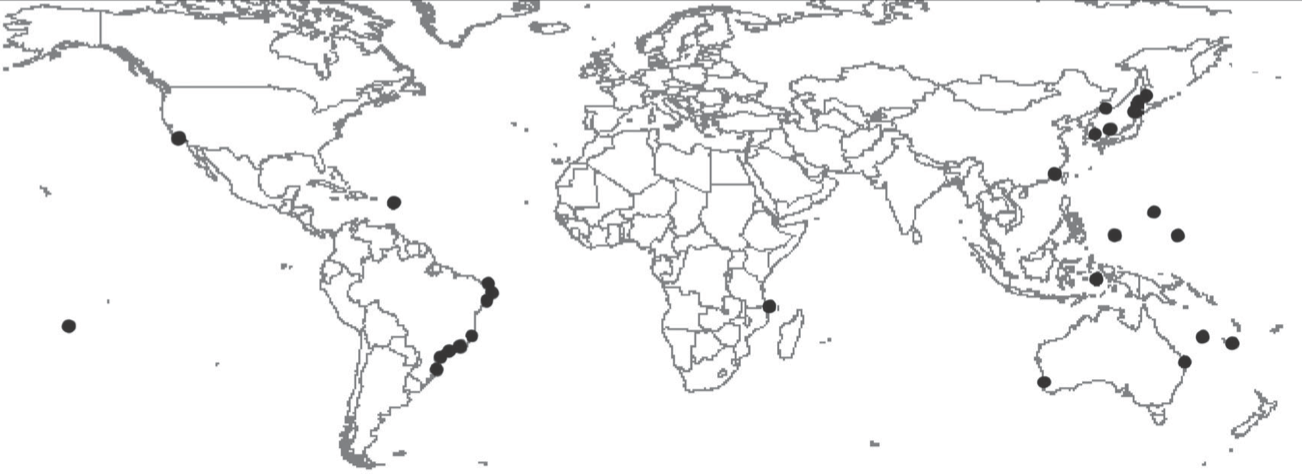Biogeographic distribution
B. tuberatus have been found attached to pilings, floats, rocks, seaweeds and other animals in various marine environments- low initertidal and shallow subtidal zones, subtropical coasts, reef crests and flats (Abbott & Newberry 1980). This indicated their adaptability to attaching to different surfaces and building colonies on them.
B. tuberatus have been described to have an unusual geographic distribution (Kott 1985). Ascidians, as hermaphrodites, have the ability to quickly colonize an area. However, due the lecithotrophic larvae of colonial ascidians, they generally have a small distribution. B. tuberatus, as well as other ascidians, are known biofouling organisms that can attach themselves to ships and docks. This may be one of the ways B. tuberatus is being introduced to different areas worldwide (Rocha & Kremer 2005).
They were first decribed by Ritter and Forsyth (1917) in Southern California, where it is considered to be native (Rocha & Kremer 2005). Then, they have subsequently been found in Brazil, Australia and many equatorial regions, such as Philippines, Indonesia and Japan. In Australia, they have been recorded in Western Australia, Hervey Bay and Wistari Reef (Kott, 1985), as seen in figure 1 below.
 Figure 1. Map with black dots showing geographical distribution of B. tuberatus, adapted from Rocha and Kremer (2005). Note that the black dots only indicate the occurrence of B. tuberatus and not the quantity present, actual distribution may be larger than the areas shown.
Specifically, the B. tuberatus specimens studied in this page were found on the settlement plates placed in the Heron Island Reef, off a sandy reef flat environment called 'Shark Bay'. Not only were colonies found on the glass plates, they were also found on the metal racks themselves. Growing on different surfaces seemed to affect the overall structure of the colony, whereby the ones on the metal racks were taller in height and more compact while the ones on the glass plates were more spread out and flat.
Figure 2. Image shows Heron island and its surrounding reefs (Australian Museum 2009) |